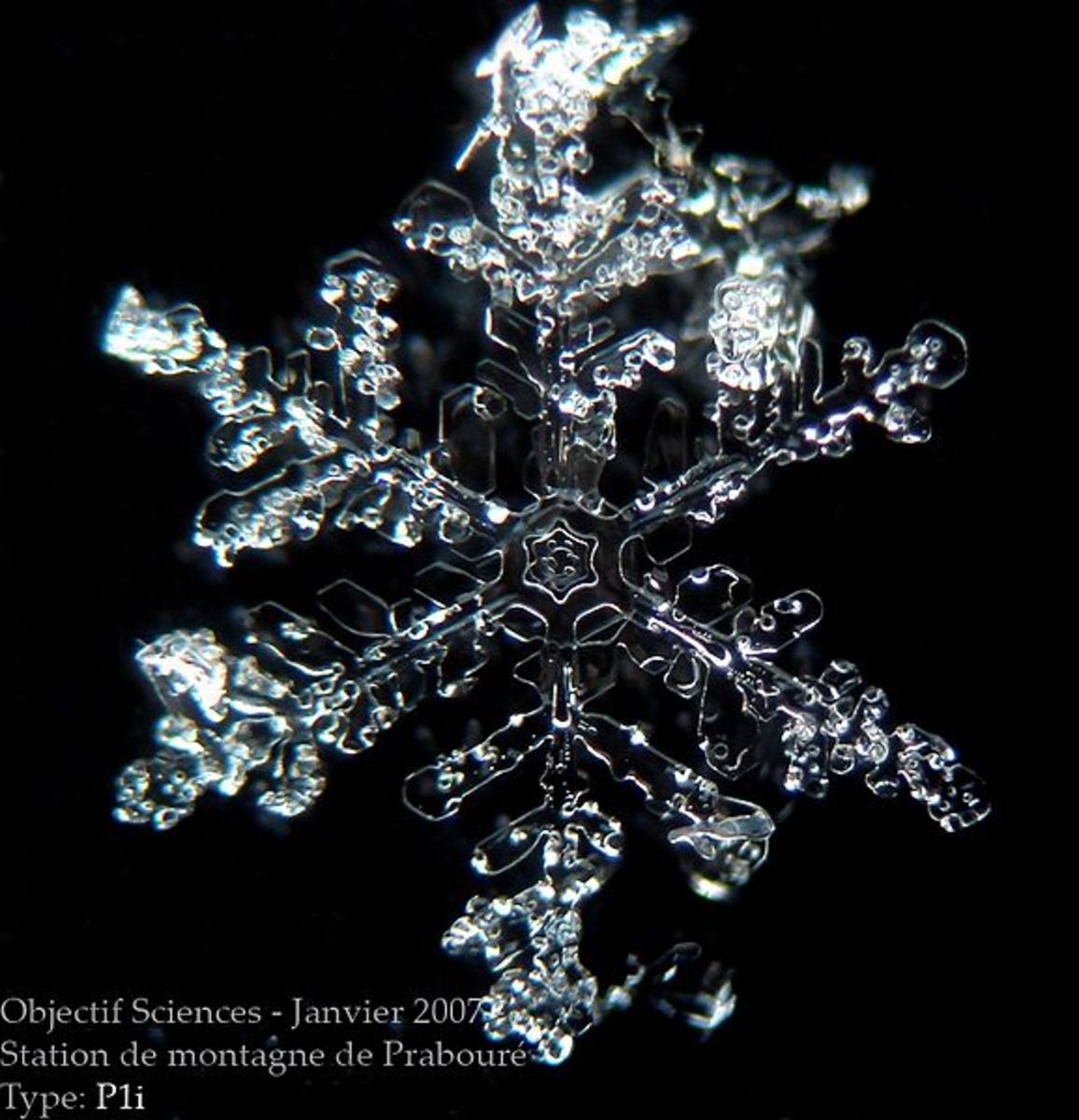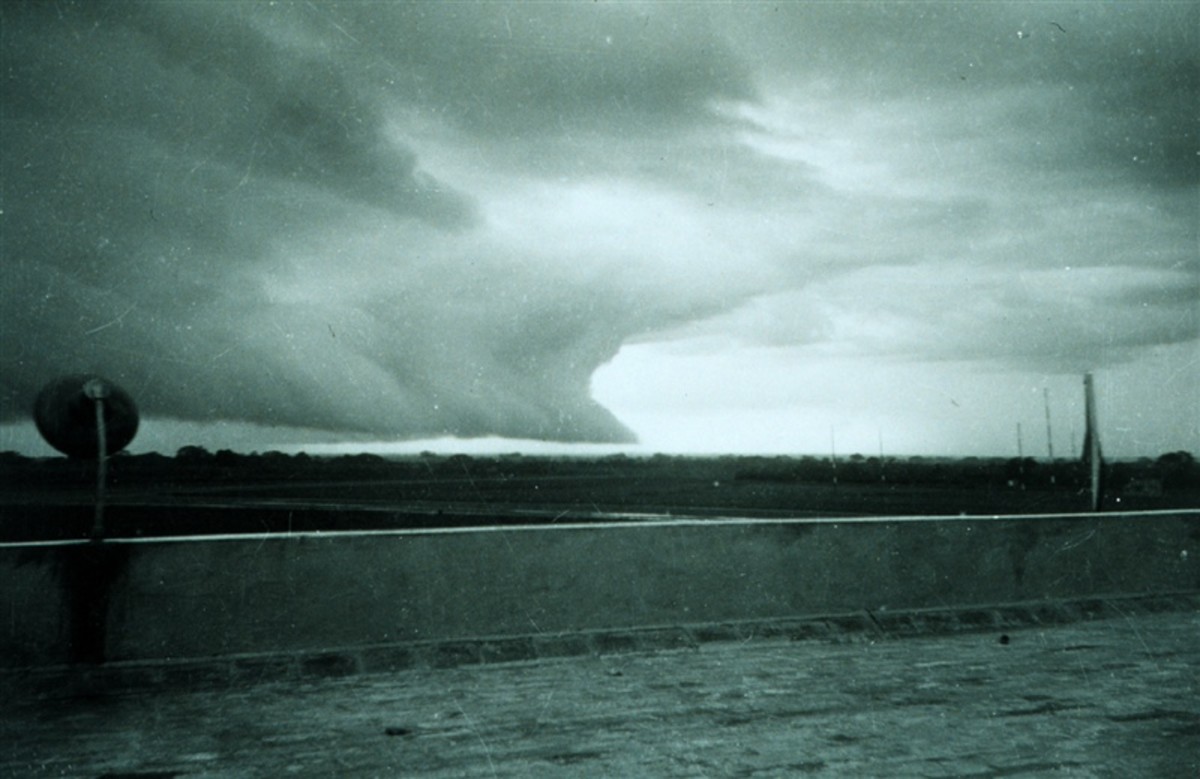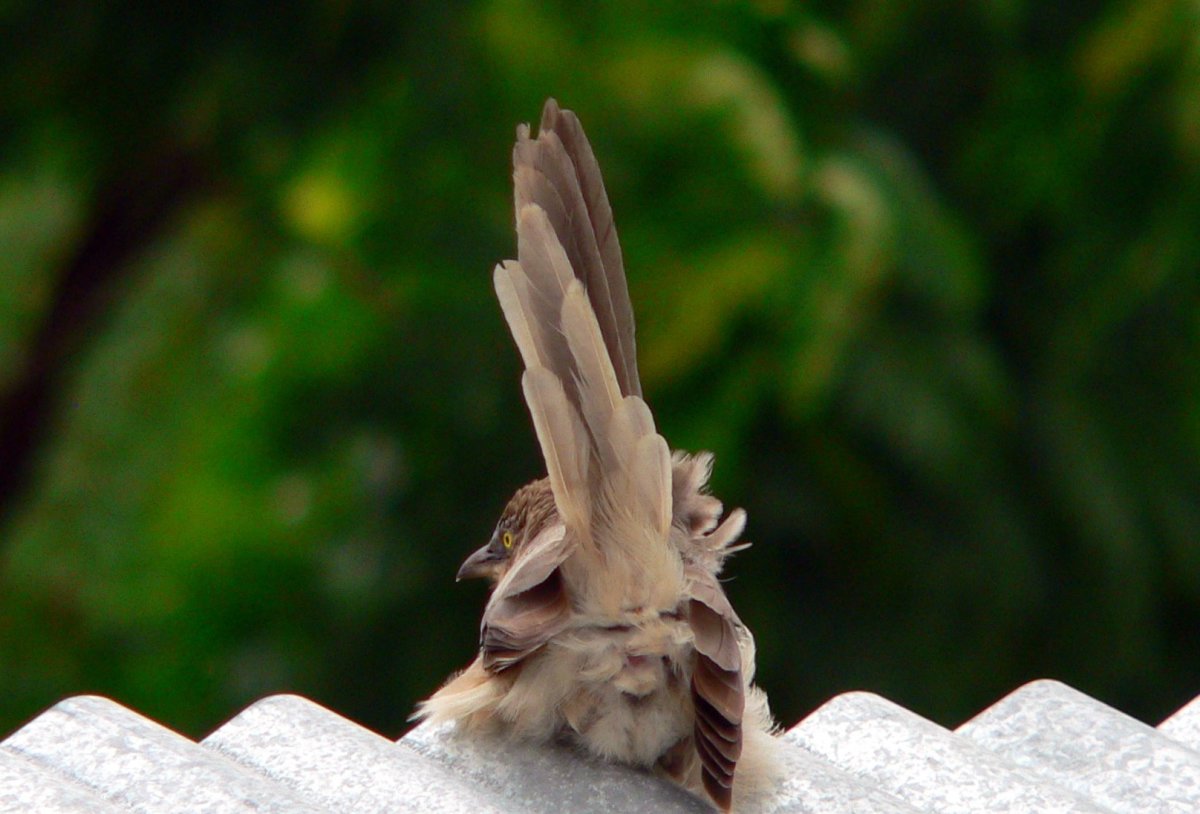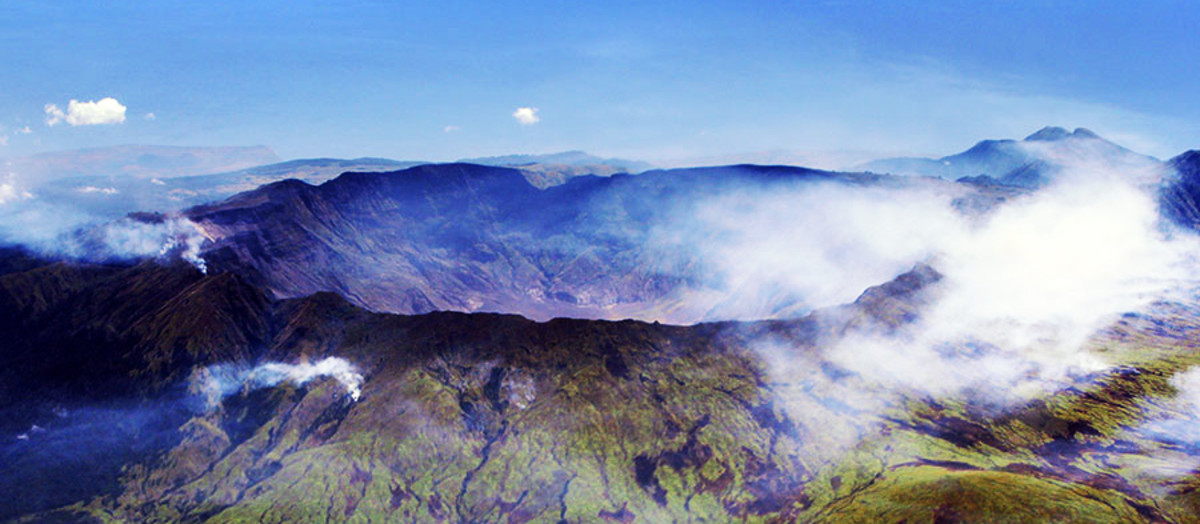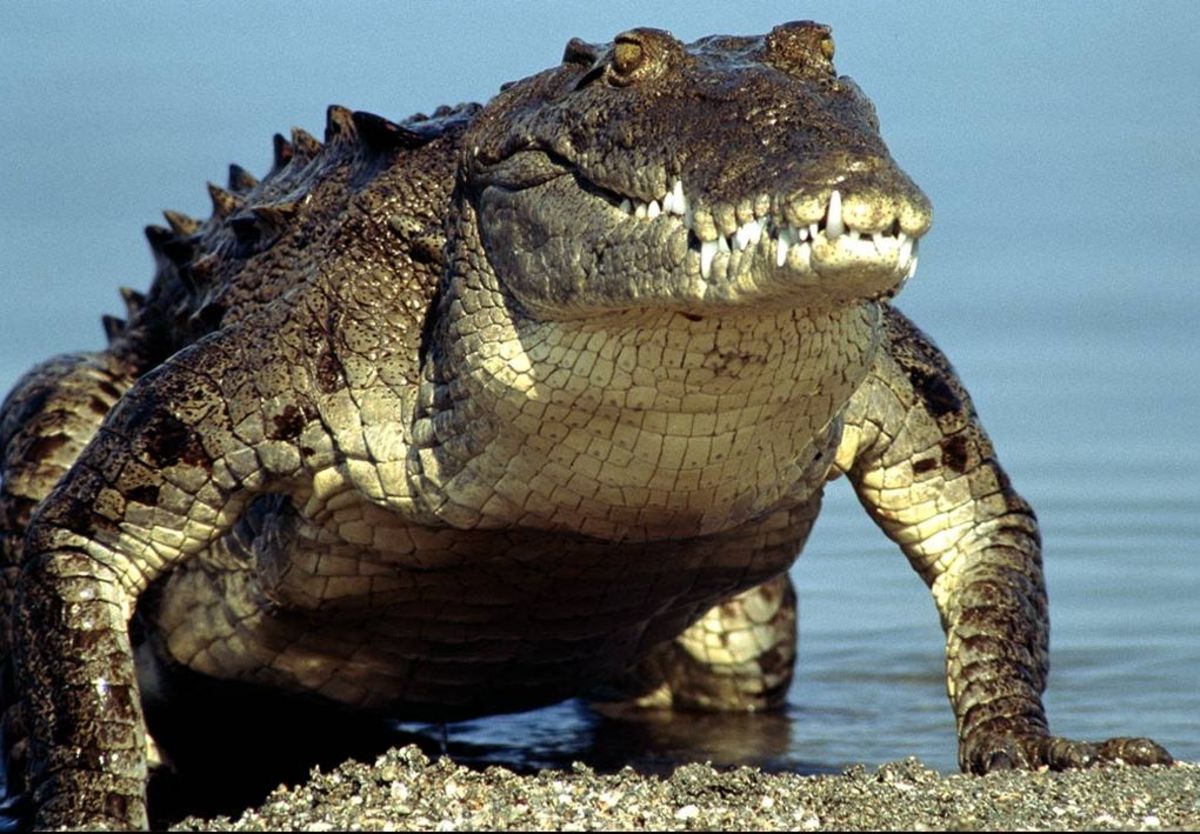Weather and Rain -Snowflakes and Raindrops
rainshowers and raindrops
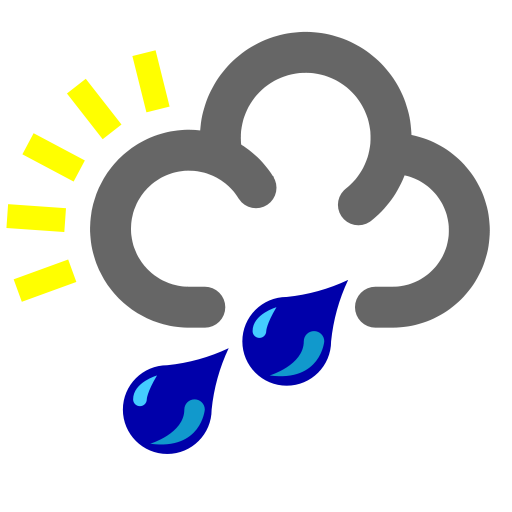
Rain
“If the rain spoils our picnic, but saves a farmer's crop, who are we to say it shouldn't rain?” ~Tom Barrett
Rain - it is all a matter of perspective. It usually interferes with the things we want to do (unless we want to take a walk in the rain). If we haven’t had rain for awhile, we do appreciate it.
We all know how important it is for the plants, for the crops, for the beauty of nature and for our existence. We often take rain for granted, but there is a delicate balance in nature for rain to form.
Read on and you may discover some interesting facts about this aspect of weather.
How Raindrops Form
Raindrops start out as cloud droplets.
In the middle of nearly every cloud droplet is a condensation nucleus. It is the nuclei that attract water.
Condensation nuclei are microscopically small, ranging in size from 0.0002 to 0.006 millimeters (0.000008 to 0.0002 inches) in diameter.
As small as these nuclei are, they are much bigger than any individual water vapor molecule. These ever so small nuclei are usually made up of dust, or salt that will attract the water to condense.
The dust and salt originate from the sea salt from the ocean, the soil, and from the burning of fossil fuels and vegetation.
As it begins to precipitate, they get washed out and cleansed from the air. A cloud forms from trillions of water vapor molecules that have condensed into millions of condensation nuclei.
The process of change of state from a vapor to a liquid is called condensation.
Why Do Cloud Droplets Turn into Raindrops?
There are 2 different ways cloud droplets can turn into raindrops.
Cloud droplets by themselves are so light, they stay in the air from the updrafts in the air.
One way is what is called collision and coalescence. The cloud droplets bump into each from the air current and it is called a co, llision. A coalescence is when they stick together after colliding. As they get big enough, they will fall to the ground.
It was Tor Bergeron, a Swedish meteorologist in the 1930’s who discovered the primary reason cloud droplets turn into raindrops.
The Bergeron Process explains that ice crystals attract the cloud droplets at the top of the clouds, making the ice crystals larger and larger. The air becomes saturated and the ice crystals join with each other to become snowflakes. The snowflakes become heavy enough to fall throught the warmer atmosphere, melt, and turn to rain as it hits the ground.
How Fast Do Raindrops Fall?
Since cloud droplets are so small they fall very slowly, about 0.2 mph or 1 cm per second.
Even the biggest of cloud droplets fall at the rate of 0.5 mph or 25 cm per second.
But raindrops, which can be 1 million times larger than cloud droplets, fall to the ground from the force of gravity at a speed of about 650 cm per second or 15 mph.
The average raindrops fall between 7 and 18 mph or 3-8 m per second. the range depends on the size of the raindrops.
If raindrops fall faster than 18mph, air friction will break up the raindrops.
Raindrops Usually Start Out as Snowflakes
Usually a raindrop starts out as a snowflake and melts as it falls towards warmer air.
Through evaporation, the raindrop can become cooler. Snowflakes can melt and refreeze as sleet, in winter air. In the summertime, a raindrop is often much cooler than the surface air temperature.
For rain and snow to form, tiny cloud drops or ice crystals merge and become heavy enough to fall. Most precipitation occurs because air over the oceans evaporate water.
Rain from the oceans is never salty because when the water evaporates the ocean water, the salt is not attached to it and so the salt stays in the ocean.
On occasion, when there is a hurricane, it can blow salty foam from the waves on land and the rain would be salty. The salty foam gets mixed with the rain, but is not really part of the rain.
Ring Around the Moon and Rain is on the Way
If you spot a ring around the moon, known as a halo, it may mean it is going to rain the next day.
The reason is, that cirrus clouds often precede a storm. If the cirrus clouds are then replaced by lower, thicker clouds, there is a good chance that snow or rain is coming.
The ring is really an optical illusion, created by tiny ice crystals 20,000 feet about the ground, that have formed thin wispy clouds.
The clouds are very very thin and thediffracted light from the brightness of the moon makes them appear as a ring or halo around the moon.
Freezing Rain, Sleet, Steady Rain, Showers, and Drizzling Rain
When rain falls from a cloud and evaporates before it reaches the ground, it is called virga.
There is a difference between freezing rain and sleet. Sleet is tiny pieces of ice that starts out as snow.The snow melts as the air it falls though gets warmer. Then the air gets thicker and colder, below freezing, and refreezes as an ice pellet.
Freezing rain starts out as snow also. It melts as it goes through warmer air and stays liquid (rain), When it hits the frigid ground, it freezes. .
A drizzle is rain that measures less than 0.02 inches in diameter, falling close together, usually from thin stratus clouds. The upward moving air current makes the droplets fall from stratus clouds before they have grown heavier.
The intensity of rain or drizzle is based on a visual estimate and on the amount of liquid that falls in 1 hour.
Rain usually falls a steady number of hours from a slow growing stratus clouds.
Showers develop through convection from cumuliform clouds. They start and stop suddenly, and the precipitation may be heavier.
Showering You With Facts
Some Interesting Facts About Rain:
-
Although there is no way of truly estimating how many drops of rain fall in an average storm, some meteorologists have estimated it to be about 1,620 trillion drops.
-
Rain consists of droplets that can be as big as 0.25 inches before they fall to the ground.
-
When a raindrop grows bigger than about ¼ inch in diameter, it usually breaks up into smaller raindrops.
-
Raindrops are not teardrop shaped. Rain drops are round until they grow too big. The air pressure pushes on the bottom of bigger raindrops, giving them a shape similar to a hamburger bun.



